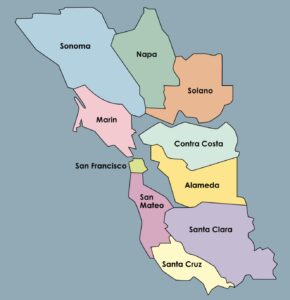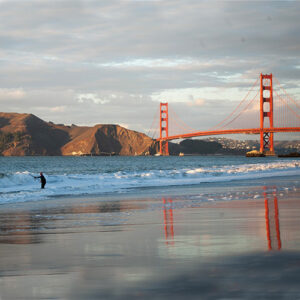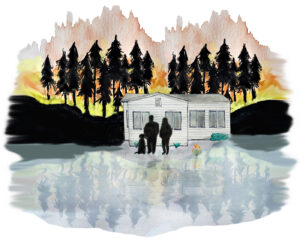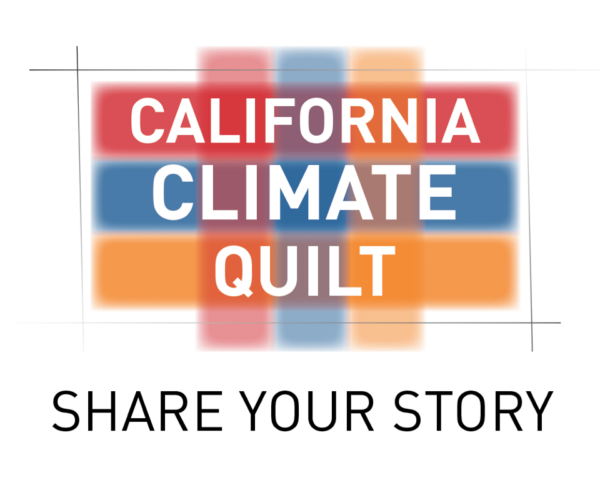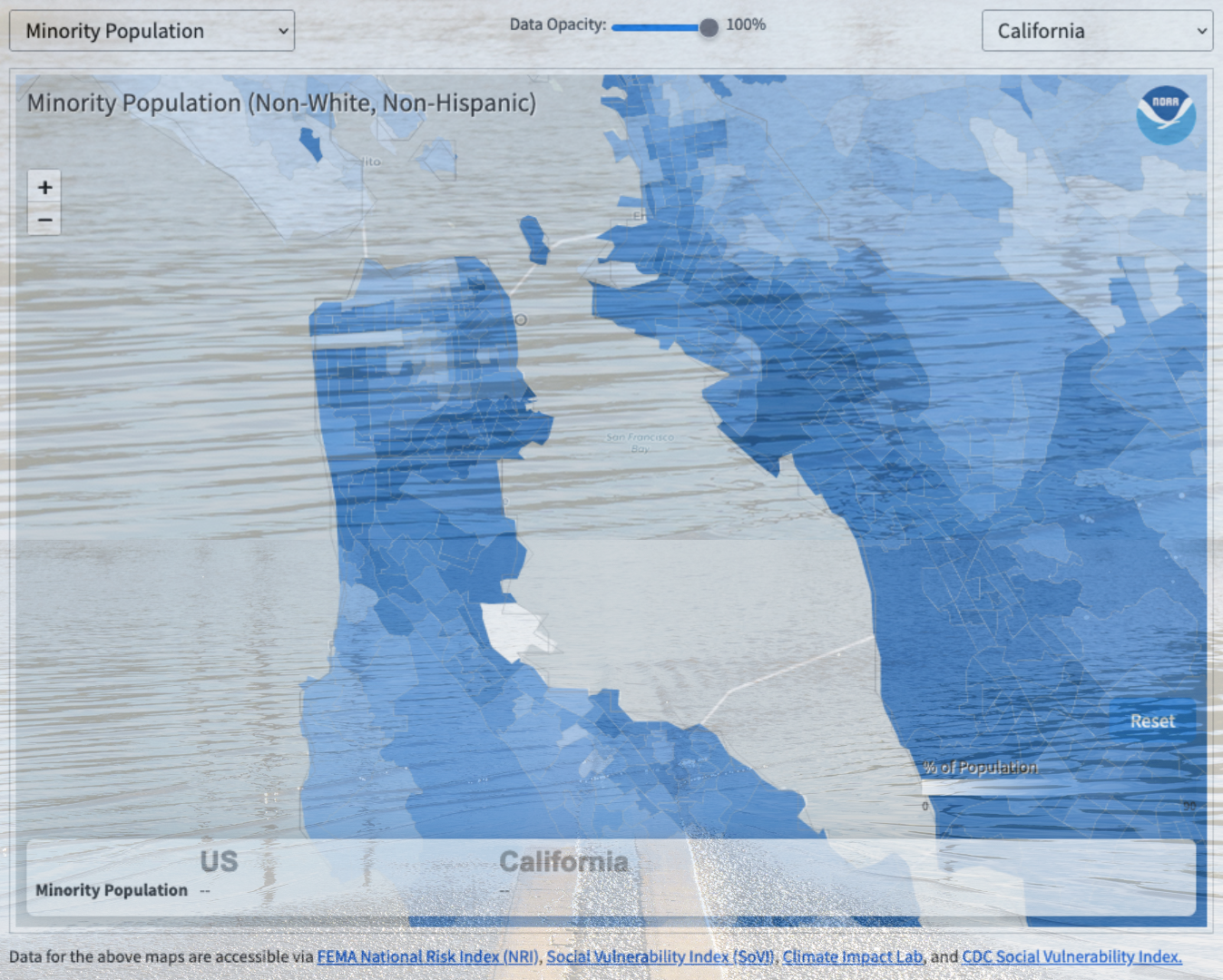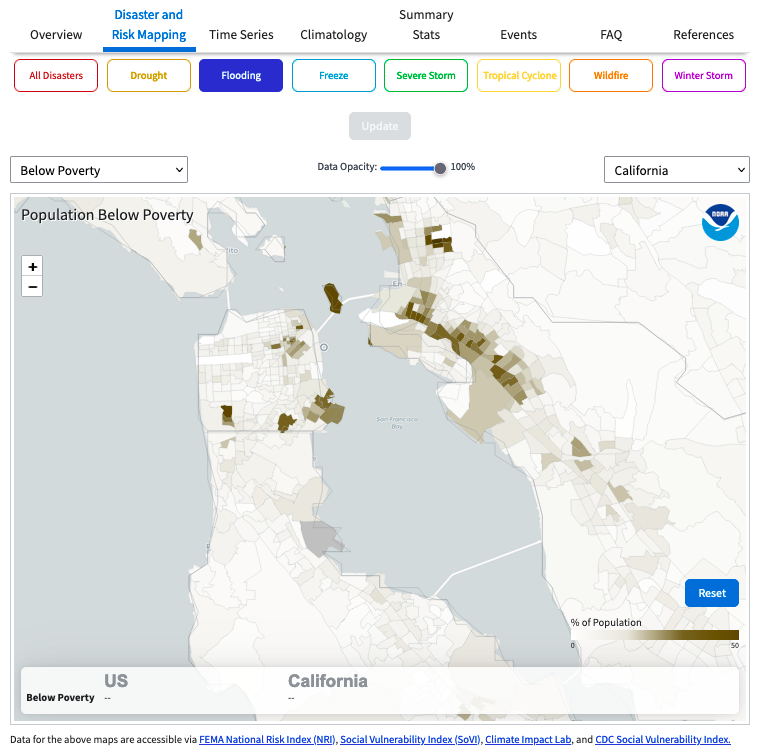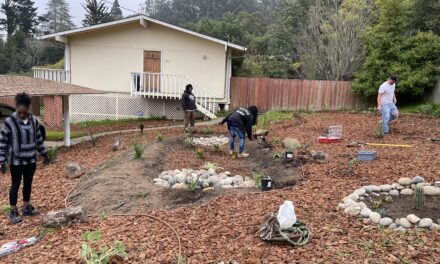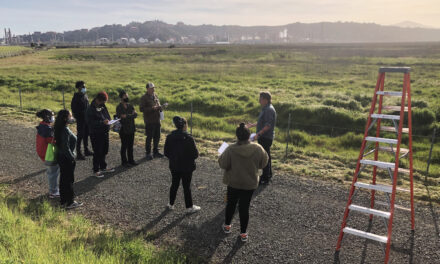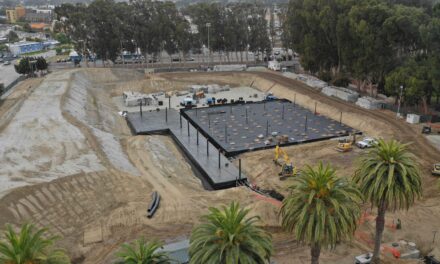Mapping Those Most At Risk
When planning for climate disaster, many federal agencies assess risk on the scale of cities and counties. But in reality, neighborhoods within a city are impacted very differently from one another. A flood that hits Bayview-Hunters Point in San Francisco would pummel a dense, 96% minority community with a poverty rate nearly three times as high as the county average. That same flood in the Marina District would encounter a spread-out, predominantly white, and highly educated population with an average salary nearly ten times greater than Bayview-Hunters Point’s — making the area far more able to withstand the flood and bounce back.
With the National Oceanic and Atmospheric Administration’s recent update to their long-running Billion Dollar Disaster Map, urban planners and citizens can see for themselves how disaster risk and vulnerability vary at the much finer “census tract” scale, representing about 4,000 people in a geographic area. Using the tool to look at “hazard risk” and “social vulnerability,” one can see how frontline communities like San Jose’s Alviso, Marin City, the San Rafael Canal District, East Oakland, and others stand out in stark contrast to the wealthier, whiter neighborhoods around them. The tool shows which census tracts have a significant number of people with characteristics that contribute to social vulnerability — for instance, those without vehicles, senior citizens, or the mobility-challenged. Or race, income, and educational level, which correlate with lower access to essential government programs and services that are essential to helping people and communities rebuild after a disaster.
As risk maps go — and there are an overwhelming number out there — NOAA’s is still a little clunky. The census tract view is hidden in a drop-down menu above and to the right of the map, and to look at historic flood hazard risk one has to manually de-select all six other hazard types. The Bay Conservation and Development Commission’s regional Community Vulnerability map is even more granular, analyzing vulnerability at the small “census block” scale (geographic areas of 3,000 people or less), and it also indicates contamination exposure. But hopefully NOAA’s update represents progress toward seeing pre-existing risk and vulnerability disparities within a city or county, and taking ameliorative steps before the next disaster exposes and widens them.
Other Recent Posts
Assistant Editor Job Announcement
Part time freelance job opening with Bay Area climate resilience magazine.
Training 18 New Community Leaders in a Resilience Hot Spot
A June 7 event minted 18 new community leaders now better-equipped to care for Suisun City and Fairfield through pollution, heat, smoke, and high water.
Mayor Pushes Suisun City To Do Better
Mayor Alma Hernandez has devoted herself to preparing her community for a warming world.
The Path to a Just Transition for Benicia’s Refinery Workers
As Valero prepares to shutter its Benicia oil refinery, 400 jobs hang in the balance. Can California ensure a just transition for fossil fuel workers?
Ecologist Finds Art in Restoring Levees
In Sacramento, an artist-ecologist brings California’s native species to life – through art, and through fish-friendly levee restoration.
New Metrics on Hybrid Gray-Green Levees
UC Santa Cruz research project investigates how horizontal “living levees” can cut flood risk.
Community Editor Job Announcement
Part time freelance job opening with Bay Area climate resilience magazine.
Being Bike-Friendly is Gateway to Climate Advocacy
Four Bay Area cyclists push for better city infrastructure.
Can Colgan Creek Do It All? Santa Rosa Reimagines Flood Control
A restoration project blends old-school flood control with modern green infrastructure. Is this how California can manage runoff from future megastorms?
San Francisco Youth Explore Flood Risk on Home Turf
At the Shoreline Leadership Academy, high school students learn about sea level rise through hands-on tours and community projects.

